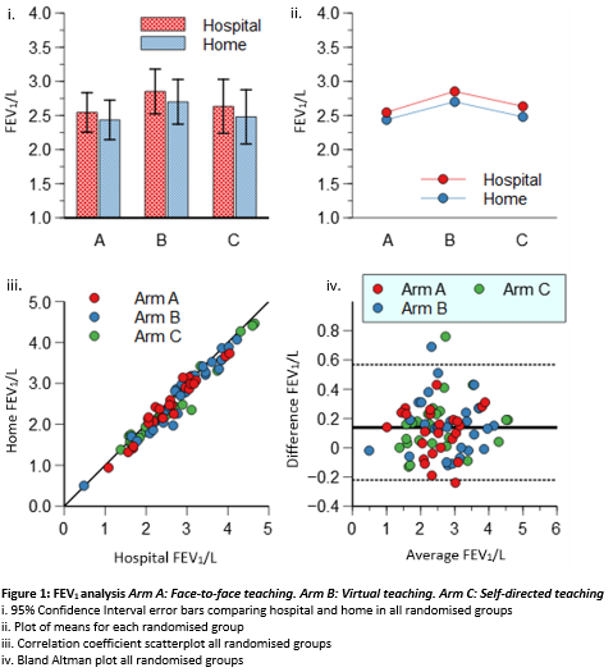Abstract
Title
A randomised controlled trial of self vs clinician-taught home spirometry
Background
Home spirometry enables assessment of lung function remotely in patients? homes, thereby increasing availability in hard-to-reach populations. The best method of teaching home spirometry is unknown.
Aim
To determine the accuracy and acceptability of self vs clinician-taught home spirometry.
Methods
Single centre, unblinded, randomised controlled trial of adults referred for spirometry. Participants were randomised (1:1:1) to be taught face to face (A), virtually (B) or self-directed (C). Home spirometry readings (Spirobank Smart) were compared to each other and hospital measurements (Vyntus) using Bland-Altman and two-way ANOVA.
Results
106 participants were randomised. Home and hospital spirometry were highly correlated. No significant difference between teaching methods were found. In all groups, FVC (mean difference 0.238L, p<0.001, 95% CI 0.160-0.315) and PEFR (mean difference 60ml, p<0.001, 95% CI 43.7-77.3) measurements were higher in hospital vs home spirometry. FEV1 mean difference (0.138L, p<0.001, 95% CI 0.097-0.180) was within ATS/ERS reproducibility criteria.

Conclusions
There was no significant difference in lung function results between the teaching methods. Spirometry values were lower at home than in hospital in all groups. Further analysis is needed before home spirometry is used diagnostically in an unselected population.